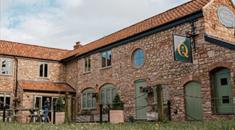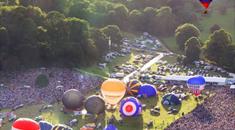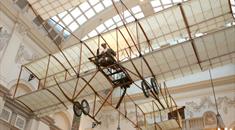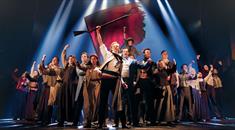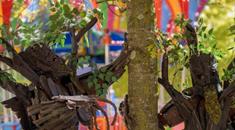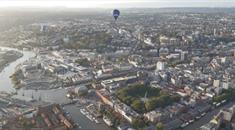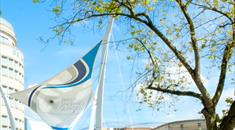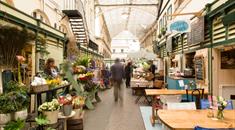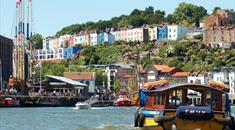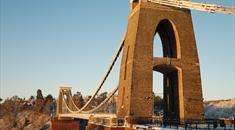Bristol may be a bustling city, but it also has a greener and wilder side.
We asked Heather from the Bristol Nature Channel to tell us her top five wild places that have inspired their nature documentaries and show that Bristol is bursting with urban wildlife. Take it away, Heather...
The River Avon
On a hot, summer’s day, I can’t resist a paddle along the River Avon in my blow-up canoe. Did you know, ‘Avon’ derives from the celtic word ‘afon’ which means river, so a paddle up the River Avon is a paddle up the River River!
With water rippling like a broken mirror, wrens singing their little hearts out and lily pads lining the edge, this is the best place for a time out from the hustle and bustle. Only the odd train zooming past somewhere in the distance reminds me that I am, in fact, still in a metropolitan city. One of my favourite wildlife spots at the section of the river near Eastwood Farm are the hypnotic, metallic green-blue damselflies whose wings switch from mesmerising blue to shadow black with every flutter.
If you don’t have a canoe, you can walk or cycle along the river, just be sure to finish your trip with a cheeky pint at Beese’s Riverside Bar and Garden!
- Take a trip along the river to Beese's with Bristol Packet Boat Trips or Bristol Ferry Boats
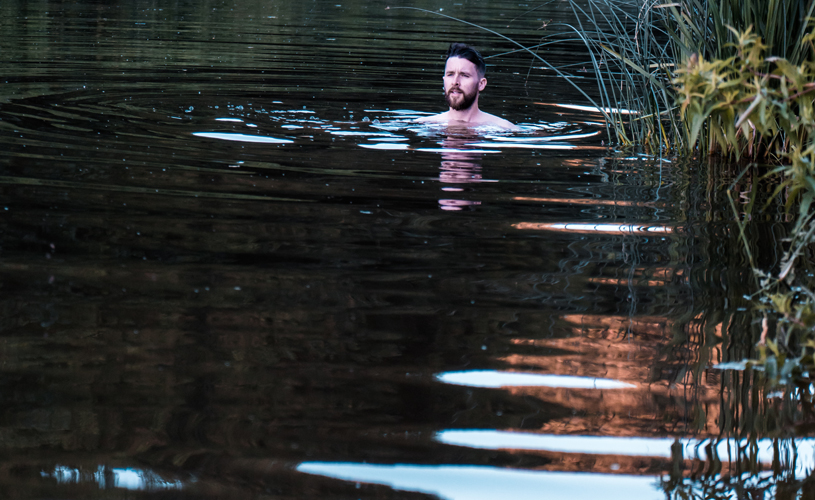
The River Avon, Credit: Heather Lampard, Bristol Nature Channel
Arnos Vale Cemetery
Would you ever visit a graveyard for a day out? Here in Bristol, one of the most alluring wild spaces is the gothic grounds of Arnos Vale Cemetery.
In this famous cemetery, a walk amongst gravestones is an experience like no other. Every step takes you to a scene from Sleepy Hollow, with old broken graves strangled by ivy and dislodged by wayward roots as nature slowly reclaims this Victorian heritage site.
Arnos Vale is more than just a gothic encounter, it’s a Site of Special Conservation Interest. This means Bristol is the proud owner of an unusual conservation site which is littered with wild flowers, buzzing with insects, and full of badgers foraging under trees and bats owning the skies.
For me, the best time to visit is in the autumn when there’s a cool breeze on your face, crisp leaves underfoot and a golden canopy to stir your senses. I’ll let you in to a little secret… It was here where we made our first wildlife film about the bats that live in the graveyard. As our first ever film, it’s been safely stored away on our computer, never to be seen again. Trust me, it’s not worth the viewing! But, it was here where we decided to start a project that has changed our lives for the better.
So grab your walking boots, switch on your imagination and see where Arnos Vale takes you!
(1).jpg)
Arnos Vale Cemetery. Credit: Paul Box
Goats in the gully
Yes, this often surprises most people. There are indeed goats in the Avon Gorge like a scene from Billy Goats Gruff, although these goats can’t reach the bridge!
The deer at Ashton Court Estate are usually top of a Bristolian's list for a wild encounter, but here there’s something a lot more special. A collection of wild goats are living on the slopes, nibbling on scrubland to restore some of the Gorge’s most prized wildlife.
In a fenced-off area with public access, these goats are eating the way for rare plants to grow such as Bristol Onion, Bristol Rock Cress, Rock Rose and Burnet Saxifrage to name a few. Every time I visit, it still feels like a surprise to see a large bearded goat merrily chomping on plants in the middle of a city.

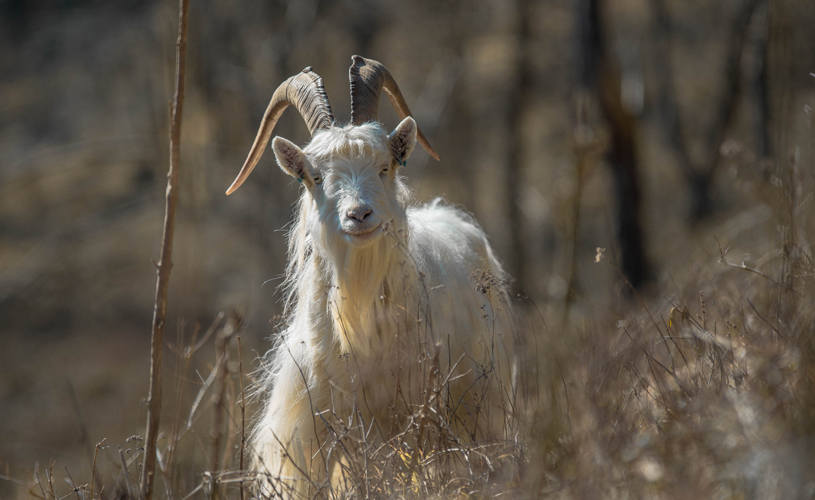
Bristol gully goats. Credit: Jim Lampard, Bristol Nature Channel
University of Bristol, Royal Fort Gardens
This is the one park that has featured most in all our films. Hidden away in the University campus, Royal Fort Gardens is an immaculate park teaming with wildlife. It’s the perfect spot for beginner naturalists and those in need of some nature TLC!
Here, you’ll find beautifully crafted gardens, from carpets of crocuses in spring, to glorious foxglove trumpets in summer. The neat flower beds and perfectly mowed lawns are balanced by wildlife-friendly habitats. Hidden in bushes are handcrafted bug hotels, wildflower meadows grown in collaboration with the Avon Wildlife Trust, and grassy triangles run wild in designated spots, where those with a trained eye will find Common Spotted Orchids.
This is also a park where two of my favourite trees grow! Firstly, you’ll find Ginkgo Biloba trees growing everywhere. These beautiful trees are called ‘living fossils’. We have found fossilised specimens that date back to around 270 million years and look identical to the trees we see today. If you ever find a female Ginkgo tree with fruit (they look like little apricots), give the tree a sniff! The fruit curiously smells like sick, possibly an ancient evolutionary mechanism to attract dinosaurs to eat its fruit!
My other favourite is called a Handkerchief tree. When it flowers in spring it looks like someone has delicately draped little white handkerchiefs (or ghosts if that’s where your imagination takes you) all over its branches.
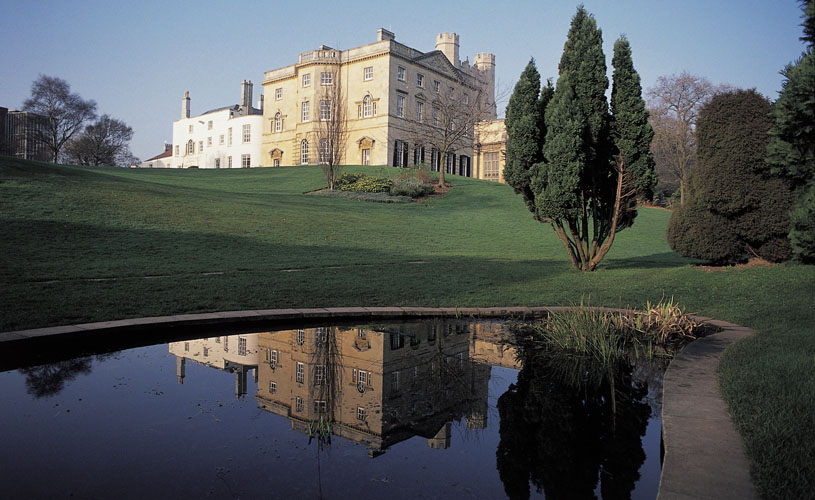
Royal Fort Gardens at the University of Bristol
Eastville Park
Near the M32 bypass sits a park that has some of the most incredible opportunities for spotting wildlife.
It was here I saw my first Kingfisher and it really wasn’t that hard to find! Everytime I walk along the River Frome I hear their distinctive whistle followed by a flash of blue (if you’re quick enough to turn your head!). If you keep your eyes peeled (or just ask the many expert birdwatchers that frequent here every day) you might see one perched on a branch. They’re surprisingly camouflaged despite their iridescent blue feathers.
There’s a large body of water with a footpath around the edge and benches where you can watch the world go by. This is where the elegant herons hang out. They stand on the edge of a little island, as still as statues, hunting fish. For those with a little patience and a well-trained eye, you might catch a glimpse of our smallest birds, Gold and Fire Crests, both rocking their bright yellow mohawks.
But, this park is famous for one of Bristol’s most surprising (and enchanting) residents - the Bristol otter. If you visit you might be one of the lucky few who witness this incredible animal catching fish in the river and sometimes, in the lake. Or, like me, you’ll only ever see the kingfisher. Not a bad compromise if you ask me!

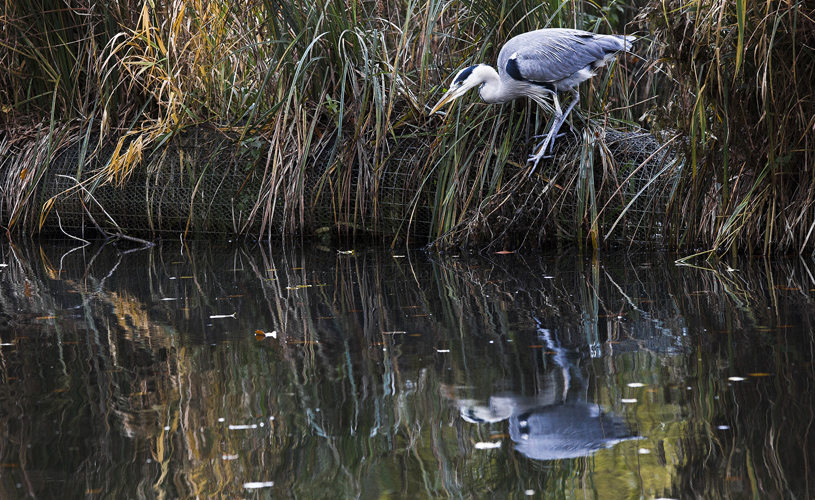
A heron in Eastville Park. Credit: Jim Lampard, Bristol Nature Channel
These are just a few of my favourite places to visit. But, there’s so much wildlife to be found living alongside city dwellers from the famous Cormorants catching fish in the Harbour to the carpets of wildflowers in Leigh Woods and Peregrines dive bombing prey in the city centre.
All you have to do is look. Stay wild!
About the author
Heather is part of the Bristol Nature Channel on YouTube, an online project that uses film, photography and blogs to showcase the wilder side of Bristol. You can find out more about the Bristol Nature Channel on their website, or subscribe to their YouTube channel to be the first to see their latest wildlife films.




 to add an item to your Itinerary basket.
to add an item to your Itinerary basket.











